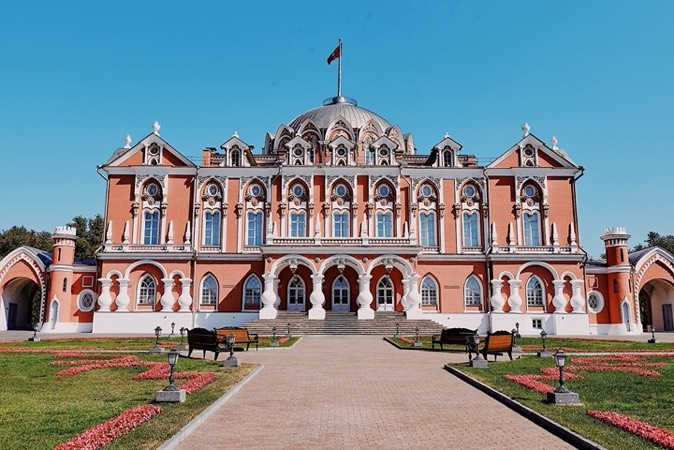Petrovsky Travelling Palace
The Petrovsky Travelling Palace is a magnificent example of the neo-Gothic style. Catherine II ordered architect Matvey Kazakov to build it in honor of the victory in the Russian-Turkish war in the XVIII century. The painting of the palace domed ceiling belongs to the brush of Giuseppe Artati, a decorator who took part in the design of the Kremlin.
The palace was the southernmost point on the way from St. Petersburg to Moscow, and high-ranking officials stopped here for a couple of days to then continue their journey to the Kremlin with fresh vigor.
Since the beginning of the 19th century, the Travel Palace has become a resting place for Russian monarchs who traveled from Northern Palmyra to Moscow to officially accept the crown.
Due to the high status of its guests, the palace attracted crowds of onlookers who wanted to look through its windows and see the king with their own eyes. Mass stampedes have occurred here more than once, often with victims. During the coronation of Nicholas II alone, 2,000 people died on the nearby Khodynka Field (later this tragic event was called Khodynka).
During the Patriotic War of 1812, Napoleon stayed in the Petrovsky Travelling Palace. The commander had to withdraw part of the French troops from Moscow because of a fire in the city (which, according to rumors, scorched Napoleon's hair while the emperor looked at Moscow from the windows).
The great poet M. YU. Lermontov, who visited here at one time, admitted to his relatives in a letter that he had grown fat in two days from the local fresh air.
After the revolution of 1917, a museum of aviation of the “Reds” was organized in the building of the traveling palace. Then the palace was transferred to the jurisdiction of the Air Force Engineering Academy.
On the threshold of the millennium, the building underwent a large-scale restoration. According to Luzhkov, who at that time held the post of mayor of the capital, the palace was supposed to open its doors to foreign delegations.
Today, the Petrovsky Travelling Palace is a venue for festive and business events, such as official receptions, wedding ceremonies, exhibitions, seminars and conferences. For those wishing to get acquainted with the architecture of the palace, paid tours
Address
prosp. Leningradsky 40
Address
prosp. Leningradsky 40
Address
prosp. Leningradsky 40
Timetable
ticket office: Tue, Wed, Fri — Sun 10:00 — 19:00, Thu 11:00 — 20:00
Timetable
ticket office: Tue, Wed, Fri — Sun 10:00 — 19:00, Thu 11:00 — 20:00
Timetable
ticket office: Tue, Wed, Fri — Sun 10:00 — 19:00, Thu 11:00 — 20:00
Phone
+7 495 480-85-26
Phone
+7 495 480-85-26
Phone
+7 495 480-85-26
Website
Petrovsky Travelling Palace
Website
Petrovsky Travelling Palace
Website
Petrovsky Travelling Palace
Source
https://kudago.com/msk/place/petrovskij-putevoj-dvorec/
Source
https://kudago.com/msk/place/petrovskij-putevoj-dvorec/
Source
https://kudago.com/msk/place/petrovskij-putevoj-dvorec/


